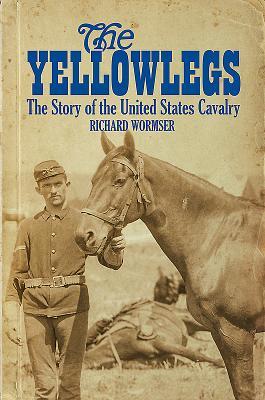
The story of America’s cavalry is extraordinarily rich in colourful, and often flamboyant, personalities and exciting action. Indeed, much of the early military history of the United States is dominated by the exploits of its horse-soldiers. In this comprehensive and lively account, the author – who was himself an enthusiastic horseman – narrates the major events and characters of the US Cavalry’s formative, and, some might say fruitful, years. From the American Revolution and the exploits of men such as Henry ‘Light-Horse Harry’ Lee III and Francis Marion, the first of the guerrillas, the author follows on with Stephen Kearny, the ‘Father of the Cavalry’ whose Dragoons went West to California on mules, and his nephew Philip, who organized the famed Gray Horse Troop of the Mexican War. Other famous names that feature in this narrative are those of Jonathan ‘Stonewall’ Jackson, George Crook, who admired the Indians it was his duty to hunt down, and George Armstrong Custer. A United States Army officer and cavalry commander who served with distinction in the American Civil War, Custer is most commonly remembered for leading more than 200 of his men to their deaths in the Battle of the Little Bighorn in June 1876. Also known as ‘Custer’s Last Stand’, Bighorn was part of the Black Hills War against a confederation of Plains Indians, including the Cheyenne and Dakota Sioux. It remains one of the most controversial battles in American history. Roosevelt’s Roughriders and Black Jack Pershing, who led his troops in an automobile, complete the narrative – one which is undoubtedly a saga of daring raids, of epic marches, and of gruelling battles. As the author reveals, the story of the US Cavalry is also the story of the birth and growth of America itself.
Author
Richard Edward Wormser was an American writer of pulp fiction, detective fiction, screenplays, and Westerns, some of it written using the pseudonym of Ed Friend. He is estimated to have written 300 short stories, 200 novelettes, 12 books, many screenplays and stories turned into screenplays and a cookbook Southwest Cookery or At Home on the Range. After graduating from Princeton University he became a prolific writer of pulp fiction under his own name, the pen name of Conrad Gerson, and wrote seventeen Nick Carter novels for Street & Smith. Wormser's first crime fiction novel was The Man with the Wax Face in 1934. His first Western novel was The Lonesome Quarter in 1951. During World War II he served as a forest ranger. Wormser won Western Spur Awards for juvenile fiction for Ride a Northbound Horse in 1964, and for The Black Mustanger in 1971. He also won an Edgar award for best original paperback novel for The Invader in 1973.